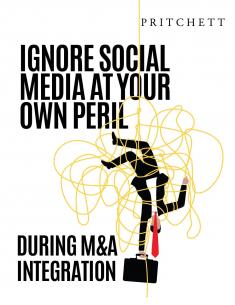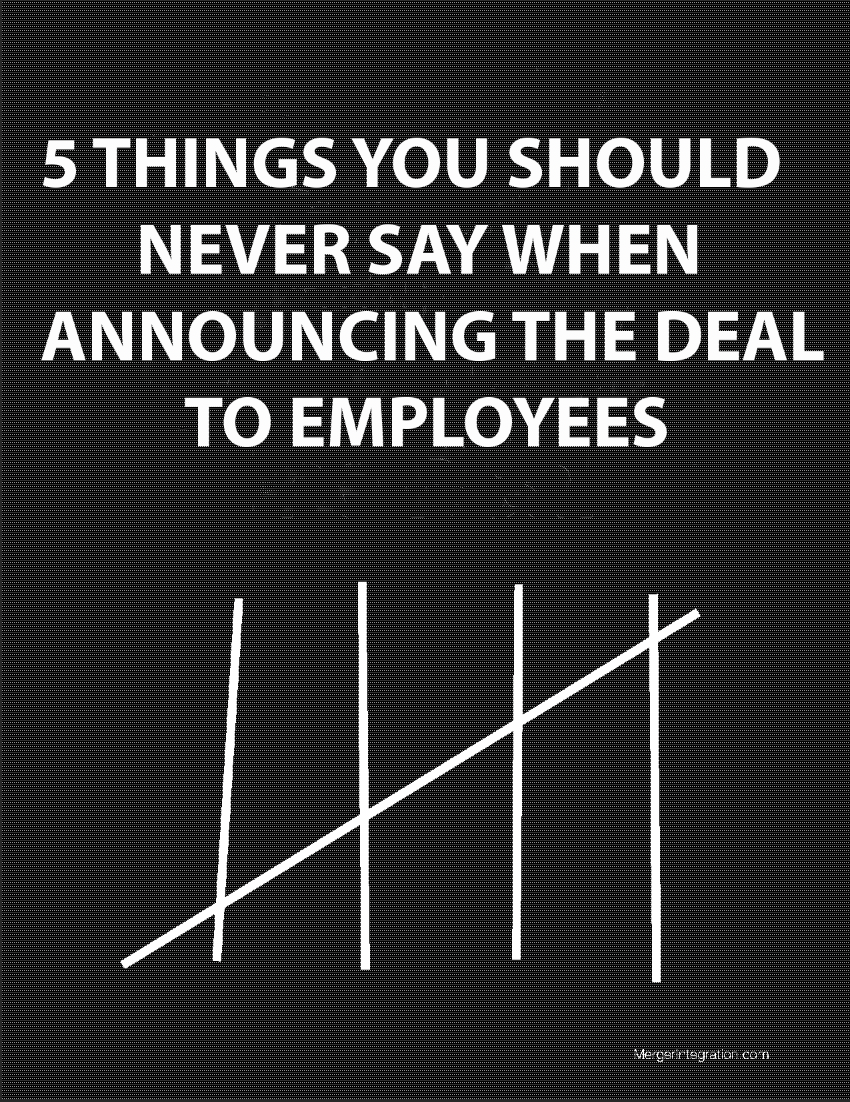Communication problems have always ranked #1 on the list of generic problems during integration. But they’ve hit a far higher threat level now because of today’s communication technology.
With email, Twitter, Facebook, and such, it’s like every employee runs a broadcasting station. The speed, reach, and sheer volume of information circulating from the people in your workforce eclipses what was possible just a few years ago. This has serious implications for an M&A scenario.
We know that when change hits, the first scan is for danger. This is just human nature…the survival instinct at work. So when a deal is announced, people instantly scan for how it might be threatening to their careers. This creates a mindset colored by uncertainty, anger, and distrust. What employees see and hear is perceived through this negative filter, and their concerns can be shared at e-speed with others anywhere on the planet. Change always throws off sparks, so the critics and worried souls can easily find troubling issues to chatter about.
Meanwhile, of course, top management tries to highlight the positives of the deal. But as the old saying goes, “Bad news travels faster than good news.” It’s far more viral. The new social media can rapidly produce a damaging “rubber-necker effect” as emails, tweets, and Facebook postings spread this contagion of morbid curiosity.
The big risk lies in the fact that communication problems seldom remain just communication problems. They spawn a host of secondary merger headaches such as employee resistance, loss of talent, slippages in productivity, and a nose-dive in morale. As usual, prevention is more promising than trying to cure.
During the pre-close period, you need to develop a sophisticated, hard-hitting communication strategy that helps you get out in front of the situation and shape the acquisition narrative. Controlling the story is difficult because invariably there are more questions than answers. Also, a merger is a fast-breaking story where the “truth” keeps changing and is often dead on arrival. Just remember this adage: “The more unpleasant the message, the more effort should go into communicating it.”
You’ll be dealing with people in the acquired organization (and maybe the acquiring company too) who are scared, cynical, and confused . . . they may legitimately hate some of what’s happening . . . and with the new social media they have the means at hand to out communicate you.
Don’t let it happen. Stay proactive and vigilant. Use social media along with more traditional corporate communication channels to continually address issues and disseminate your messages.
The more unpleasant the message, the more effort should go into communicating it.





